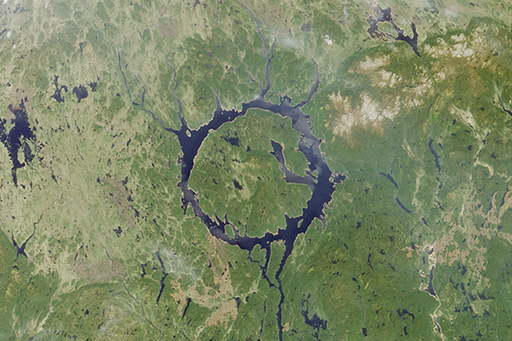3.2 Scarce craters
As you have just seen, about a hundred meteoroid impacts onto the surface of the Moon are detected every year. Each one of these will produce a crater. Think about reasons why craters formed by meteoroid impact are so rare on the surface of the Earth. It may help you to know that an incoming object has to be bigger than about 100 m across to get through our atmosphere with undiminished speed. Smaller objects are slowed down and broken apart, and if any lumps survive they hit the ground too slowly to form a proper crater.

